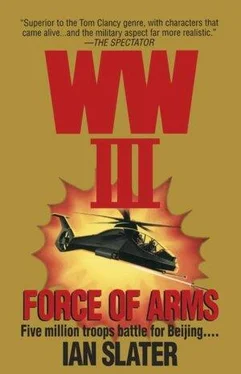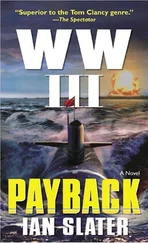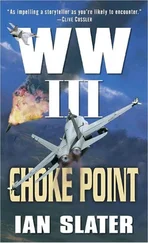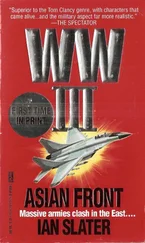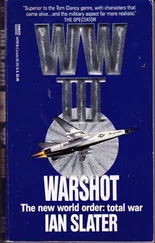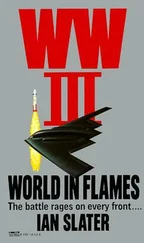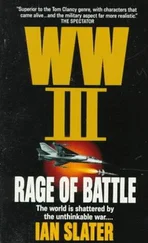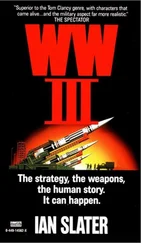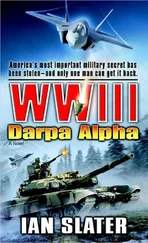A captain from the psych unit who was affronted at Freeman’s assumption that he knew more about the minorities than the psych unit asked, “Exactly which minorities did you have in mind, sir?”
“Everyone,” Freeman said, and then he gave it to them, from memory and with both barrels. “The Hui, Manchu, Daur, Oroqen, Ewenki, Tujia, She, Li, Miao, Bai, Zhuang Dai Yao, Yi, Tibetan, Uygur, and Xibe. All right?”
The captain, indeed the entire psych unit, was silenced, and Dick Norton couldn’t help a smile — he knew that news of the general’s performance would spread through Second Army like wildfire, and within hours there’d be another notch in me Freeman legend of a man who, as usual, knew and had studied his enemy in meticulous detail.
“Norton.”
“Yes, General?”
“Get Harvey Simmet up here. Fast Tell him I want another update on the next five days’ weather.”
* * *
Harvey was relaxing, or rather in the process of relaxing, on his bunk when after some initial static on the tape he settled down, hands crossed in a funereal position, to hear the first few bars of Sinatra’s “My Way” when the PA crackled to life. “Would Major Harvey Simmet report to…”
* * *
The latest from frontline SITREPs — situation reports— told Freeman that his forces were holding their own against the massed T-59s and T-62s south of Orgon Tal, with only two of every one hundred U.S. tanks “tits up”—down— because of some mechanical failure. But up around Honggor, the other terminus of the front, the situation was grim. The PLA’s salvos of mobile-type 54-1 122mm howitzers thudded away at the dug-in American positions of Five Corps as screams from the swarms of T-70 130mm rockets rent the air as the rockets crashed down in deadly unison.
In defilade hull and turret positions the Americans’ M1A1s held their own, but on this, the northeastern end of the trace, the battle took on a strange and unexpected aspect of trench warfare from the days of World War 1 and the Korean War — both sides in a rough equality, Cheng’s armies having more men and more guns, the Americans fewer men and guns but much more accurate in their fire.
There was an attempt by Cheng’s army to ford a swollen irrigation ditch in the desertlike terrain here with fifty-one of his fifteen-ton type-77 AAVs — amphibious armored vehicles — but the American M1A1s, able briefly to see through the windblown dust and debris, wreaked a terrible vengeance on Cheng’s amphibians, with only seven making the shore, and of these, two simply conked out, their armor pierced by the molten jet from an APFSDS — armor piercing fin-stabilized discarding sabot — shot and leaking all over.
Bravely the Chinese commanders opened hatches and manned the 12.7mm AA gun, and fourteen of the sixteen men from each amphibious vehicle poured out only to be caught in a cross fire between the American tanks’ coaxial 7.6mm machine gun and other 7.6mm atop each tank’s turret, not one of the Chinese infantrymen making it.
More fifteen-ton T-77 AAVs were sent across the muddy swirl of about a hundred yards wide. Again the M1A1s came up from the hatch-down defilade position and the amphibians were slaughtered. But Cheng knew what he was doing, having ordered the amphibians across, confident that, sending them en masse, a dozen or so would make it and be free to race toward the Americans’ dug-in positions. And so long as there were targets for them, the tanks of the U.S. Five Corps had no option but to use their fifty rounds apiece. Meanwhile swarms of Cheng’s fast motorbike interdiction teams, armed with 85mm, 18.8-pound, rocket-propelled grenades, raced through the dust and over narrow footbridges to sever Freeman’s overextended supply line.
Freeman’s engineers worked the wonders that they are all too often forgotten for, but they couldn’t perform miracles. The supply line they’d laid for the gasoline was a long, plastic hose plowed under a few inches of ground to bring gasoline to the front, but once a fissure in it had been made by a Chinese 81mm barrage it burst skyward in a long, thin finger of fire that served as a marker for all ensuing 81mm attacks in the sector.
Soon the line containing two blivets — the big plastic underground tanks — was like a giant water bed suddenly pierced with multiple needles, and the fuel set afire by backflash from the first mortar-created fire burned fiercely in the desert, as demoralizing to the Americans in the trenches as it was to those inside the tanks where ammunition was running low.
It was then that Cheng unleashed his regimental T-69s. The relatively light thirty-seven-ton, 580-horsepower tanks raced at fifty kilometers per hour, sweeping forward in arrowhead-shaped echelons, their laser range finders, which had been cut by the dust, of no concern because the fuel fires now illuminated the American M1A1s in turret defilade positions.
It was now that quantity — over one thousand T-69s against the two hundred M1A1s — had a quality all its own, as M1A1s that had run out of ammunition, having stopped many of the 69s dead in their tracks, were now themselves destroyed, many out of fuel as well as ammunition as they were finally overwhelmed by Cheng’s tanks.
Dragon missile antitank teams managed to make some of the Chinese main battle tanks pay for the victory, but there were still 838 Chinese MBTs left to advance on the dug-in Americans.
* * *
“Send in the A-10s!” Freeman ordered. “Use our fuel fires as flares. And undo those T-69s that are crossing or near the severed fuel line.” The A-10s, taking their cue from Freeman’s order, used the fuel fires now as identification friend-or-foe flares and killed over a hundred more of the Chinese tanks.
The Warthogs’ pilots were ecstatic, one of them reporting joyously, “We got the mothers — a hundred of ‘em,” to which Freeman’s wry reply was, “Good — that only leaves seven hundred and thirty-eight.”
The American infantry, at first dug in and now withdrawing from the positions south of Honggor without sufficient armor cover, were slaughtered by the ChiComs’ 12.7 machine guns both on the tanks and those of the YW531H-type armored personnel carriers of Cheng’s — many of the Americans simply ran down and killed by the treads of Cheng’s vehicles. In some instances, the Chinese rested their machine guns, many of them having got too hot because of the rapid fire, and used cannon to clear a trench, which left nothing but a bloody conduit of mashed bone and flesh that only further greased the treads of the Chinese tanks and gave off the peculiar copperlike odor of blood, adding to the smells of involuntary defecation, cordite, and dust.
* * *
“Dick,” Freeman announced, “we have to hit them with a second front.”
“What about Admiral Kuang?”
“He hasn’t moved yet and I can’t afford to wait.”
“What do you have in mind — something on the coast?”
“Good man,” Freeman said. “Great minds think alike. Yes, let’s have a marine air-ground task force. And call in a carrier from South Korea to provide close air support.”
Norton wondered where the MAGTAF would be used. “Where on the coast?”
“Beidaihe!”
“Ambitious,” Norton commented, in what was one of the understatements of the war so far. Beidaihe had been chosen by Freeman because not only was it 150 miles east of Beijing but it was the summer fun place for all the high-ranking cadres and their lackeys. Deng’s fortresslike villa was at Beidaihe. It was where all the top Party members and “worker heroes” of the People’s Republic and selected military personnel went to escape, and those workers suffering from lung disease and nervous disorders went to Beidaihe’s sanatorium for the peace and the salt air. Now in spring the fishing village was quiet, but it had three good beaches and had a good road as well as a railroad to Beijing. It was also the cadres’ favorite resort. It used to be said that he who owned Beidaihe — not Beijing — had the mandate of heaven. Since Mao’s victory in 1949, they simply said, “He who owns Beidaihe owns China.”
Читать дальше
